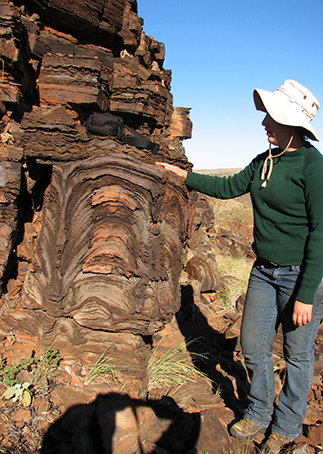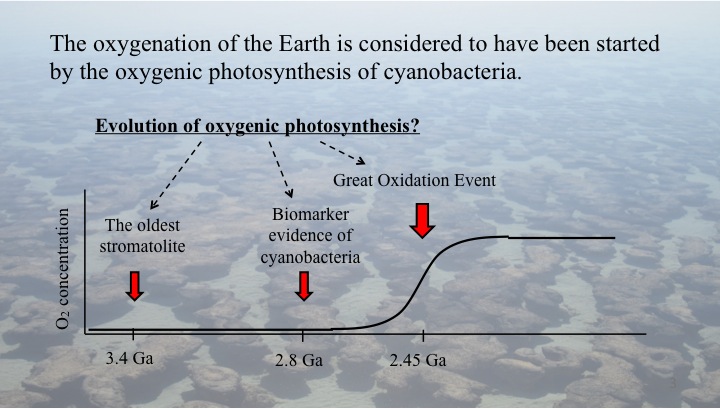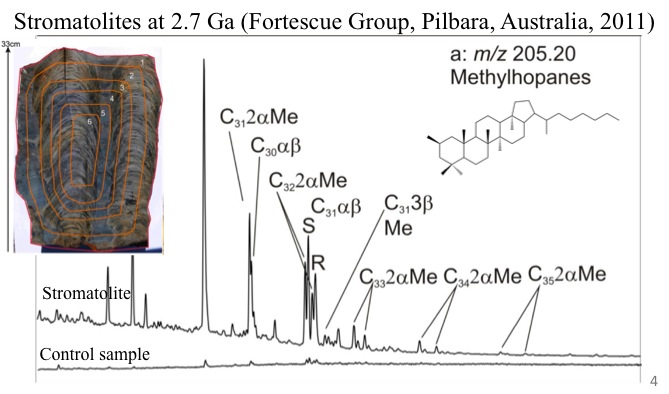Archaean Stromatolites: signal of the Great Oxidation Event

This project is collaborative with Malcolm Walter (UNSW) and others. A PhD student (Yosuke Hoshino) has started work on a project in this area.
ARC Discovery, DP1093106, 2010-2014
Walter, Neilan, George, Summons, Schopf
Oxygenating the Earth: using innovative techniques to resolve the timing of the origin of oxygen-producing photosynthesis in cyanobacteria
Jessica Coffey
PhD, 2006-2011 (moved to UNSW in 2008, I continued as Associate supervisor). Thesis: A Paleoenvironmental Study Of The 2.7 Ga Tumbiana Formation, Fortescue Basin, Western Australia
Investigating the Syngeneity and the Palaeobiology of Hydrocarbon Biomarkers in the Fortescue Group at 2.7-2.8 Ga


AOGC 2012 abstract
Yosuke Hoshino1,3 , David Flannery2,3 , Malcolm Walter2,3 and S. C. George1,3
- Department of Earth and Planetary Sciences, Macquarie University, North Ryde, Sydney, NSW 2109, Australia. Yosuke.Hoshino@mq.edu.au
- School of Biotechnology and Biomolecular Sciences, University of New South Wales, Australia
- Australian Centre for Astrobiology, University of New South Wales, Australia
It is widely accepted that the oxygenation of the previously anaerobic Earth was initiated by the oxygenic photosynthesis of cyanobacteria (Allen and Martin 2007). However, there is a great dispute over the timing of the oxygenation event. The presence of cyanobacteria at least as early as 2.7 Ga has been suggested by the presence of 2α-methylhopanes, diagnostic biomarkers for cyanobacteria (Brocks et al. 1999; Waldbauer et al. 2008). This is well before the Great Oxidation Event at 2.4 Ga, when atmospheric free oxygen first appeared in appreciable quantities on the Earth. However, some researchers have rebutted this evidence (Rasmussen et al. 2008; Brocks et al. 2011), by demonstrating that some of the biomarkers are contaminants. The oxygenation of the Earth’s atmosphere was of great importance because it dramatically changed chemical and biological processes on the Earth, and eventually the evolutionary directions of organisms. Nevertheless, our understanding of the key steps and timing of oxygenation is still limited.
The purpose of our research is to critically assess the evidence for cyanobacteria at 2.7-2.8 Ga by focusing on the record preserved in the Fortescue Group of the Pilbara in Western Australia. The Fortescue Group crops out over a large area and drill core of the group is also available. The rocks are of a very low metamorphic grade (prehnite-pumpellyite facies), and they contain microfossils, abundant stromatolites, and hydrocarbon biomarkers. Extraction of hydrocarbons is being performed on carbonates and cherts containing stromatolites, and current results will be reported.
